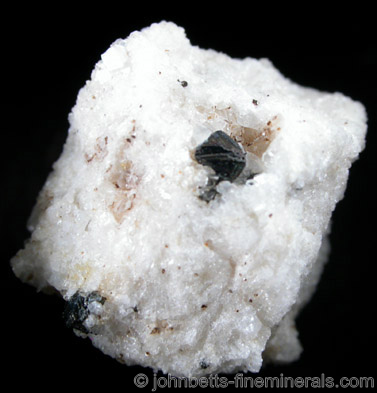The Mineral nosean

Nosean is an uncommon member of the feldspathoid group that is closely related to Lazurite and Hauyne. It can sometimes be very difficult to distinguish these three minerals without a complex chemical analysis. Nosean forms a solid solution series with Hauyne, where Hauyne contains calcium in place of some of the sodium, whereas Nosean lacks any calcium and has water in its chemical structure.
Chemical Formula
Na8Al6Si6O24(SO4) · H2O
Color
Bright blue, light blue, grayish-blue, gray, black, white, yellow, brown, colorless
Properties
Streak
Light blue to white |
Hardness
5.5 |
Transparency
Transparent to translucent |
Specific Gravity
2.3 - 2.4 |
Luster
Vitreous, waxy |
Cleavage
1,2 |
Fracture
Uneven |
Tenacity
Brittle |
Noteworthy Localities
Exceptional Nosean with an electric-blue color comes from Sar-e Sang, Kokcha Valley, Badakshan Province, Afghanistan, where it forms most often as a significant inclusion of Sodalite coating Nepheline. Complex, prismatic colorless microcrystals of Nosean come from the In den Dellen quarries, Niedermendig, Eifel Mountains, Germany; and well-formed microcrystals from Vetralla, Vico Lake, Viterbo Province, Latium, Italy.